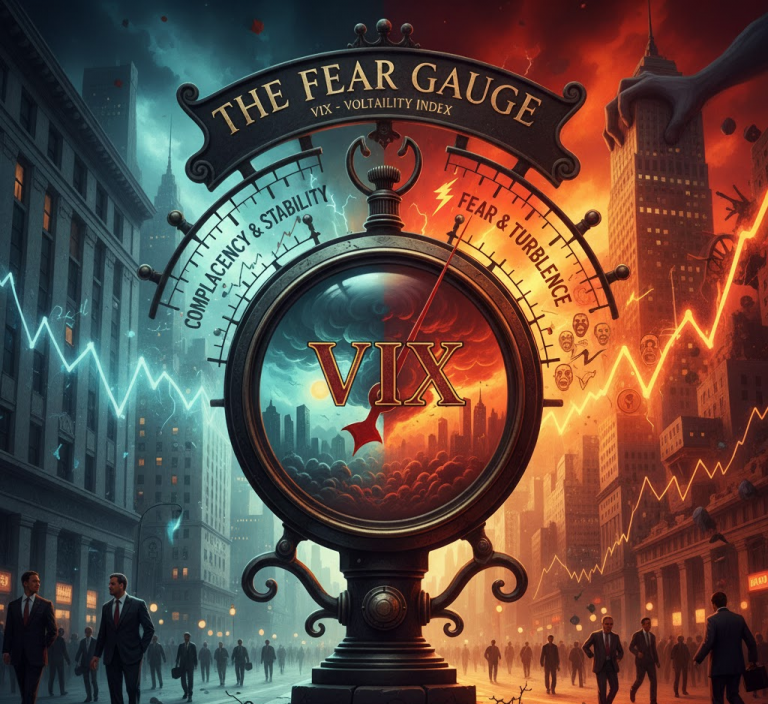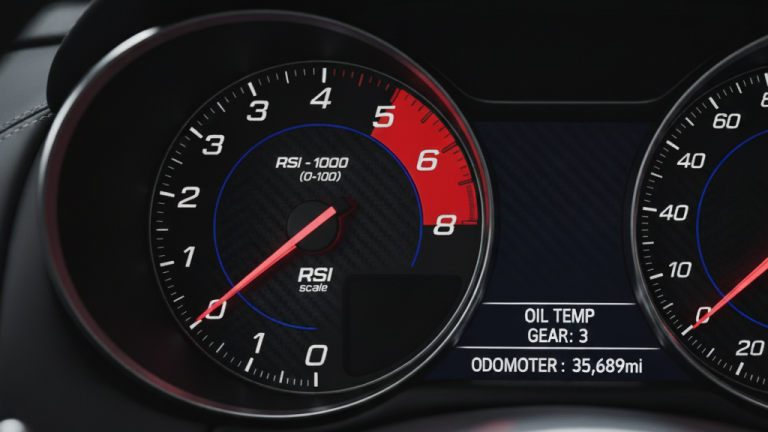Summary (TL;DR)
A professional trading approach requires a system, not a collection of standalone signals. A powerful system can be built by assigning specific roles to different indicators. We use a moving average as a strategic “regime filter” to ensure we are only trading in the direction of the dominant trend. We then use the Relative Strength Index (RSI) as a tactical “entry trigger” to identify high-probability pullbacks where we can enter the established trend at a favorable price.
Introduction
In our preceding chapters, we studied our instruments in isolation. We learned that moving averages define the trend, and the RSI measures momentum. While valuable, this is akin to a musician practicing scales. The true artistry, and profitability, comes from combining these notes to create a symphony. A single indicator can offer a suggestion; a well-designed system provides a plan. This chapter is for the serious student of the market, ready to move from observation to application by building a logical framework where indicators work in concert to answer not just “what is happening?” but “what is my plan?”
A Look Back in Time

The concept of systematic, rule-based trading was famously and successfully put to the test in the 1980s by a group known as the “Turtle Traders.” Legendary commodities trader Richard Dennis made a bet that he could take ordinary people with no trading experience and teach them a complete, rule-based trend-following system that would make them successful. He won the bet spectacularly. The Turtles were given strict rules for trend identification, entry, exit, and risk management. Their phenomenal success proved that a disciplined approach with a robust system could triumph over discretionary, “gut-feel” trading. Our goal here is to apply the same systematic principles, albeit on a smaller scale.
The Core Concept (Explained with Analogy)
Imagine you are the captain of a vessel on a multi-month voyage. Your success depends on a clear separation of strategic and tactical decisions.
The Moving Average is your Navigator’s Chart and Compass. The Navigator’s sole job is to determine the primary direction of the voyage. If your destination is east, the chart dictates you only travel east. Any westward winds or currents are to be ignored or weathered, not followed. This is your regime filter. It keeps you aligned with the powerful, underlying trend and prevents you from fighting the market’s main current. If the chart shows you are in the doldrums (a flat, trendless market), the Navigator advises you to stay in port.
The RSI is your Gauge of Tides and Waves. This instrument is tactical. Even while sailing east in a strong current, you will encounter high and low tides. A wise captain knows it is safer and more efficient to enter a tricky channel during a low tide. The RSI identifies these momentary pullbacks—the “low tides” of momentum—within the broader eastward journey. It provides the optimal moment to execute a maneuver.
The captain never uses the tide gauge to decide the direction of the voyage, and they never use the Navigator’s chart to time their entry into a port. Each tool has a job, and the system’s integrity depends on respecting that division of labor.
A Real-World Connection
Consider the powerful uptrend in the stock of NVIDIA (NVDA) throughout 2023 and into 2024. A trader using a 50-day exponential moving average as their “Navigator” would have seen a clear “bullish regime” for the vast majority of that period, preventing them from ever attempting to short this market leader. Within this massive uptrend, there were several brief, sharp pullbacks. A trader using the 14-day RSI as their “Tide Gauge” would have seen the indicator dip into “value zones” during these pullbacks. The system would have signaled multiple high-probability long entries when the momentum temporarily cooled off, allowing the trader to join the powerful, ongoing trend at a discount before the next major leg up.
From Theory to Practice: Building the System
Here, we define the non-negotiable rules of engagement for “The Trend-Momentum Pullback System.”
- Indicators Used:
- 50-period Exponential Moving Average (EMA): Our regime filter.
- 14-period Relative Strength Index (RSI): Our entry trigger.
- Rule 1: The Regime Filter (MA’s Job)This is the most important rule. We first classify the market environment.
- Bullish Regime: The price is above the 50 EMA, AND the 50 EMA is clearly sloping upwards. Only long (buy) trades are considered.
- Bearish Regime: The price is below the 50 EMA, AND the 50 EMA is clearly sloping downwards. Only short (sell) trades are considered.
- Choppy Regime: The price is crisscrossing a flat or choppy 50 EMA. The system is OFF. No trades are taken.
- Rule 2: The Tactical Entry (RSI’s Job)We only look for entries once the regime is confirmed by Rule 1.
- For Long Trades (in a Bullish Regime): We wait for a pullback. The entry signal occurs when the RSI, having dipped into a “value zone” (e.g., below 40), then crosses back up above that 40 level. This signals the pullback may be over.
- For Short Trades (in a Bearish Regime): We wait for a rally. The entry signal occurs when the RSI, having risen into a “supply zone” (e.g., above 60), then crosses back down below that 60 level.
- Rule 3: Risk Management (The Exit)An entry signal without a predefined exit is a gamble, not a strategy.
- For Long Trades: Immediately after entering, place a stop-loss order below the lowest point of the recent pullback (the “swing low”).
- For Short Trades: Immediately after entering, place a stop-loss order above the highest point of the recent rally (the “swing high”).
A Brief Illustration
“MegaCorp (MC)” is in a confirmed Bullish Regime. The stock is trading at $250, and its rising 50 EMA is at $235. A multi-day pullback brings the price down to $238, just above the EMA. This pullback causes the 14-day RSI to fall to 36. The next day, the price recovers to $241, and the RSI crosses back up to 42. This triggers a long entry. The low of the pullback was $237. The system requires an immediate stop-loss order to be placed at a level like $236.90. The trade is now active, with a clearly defined and limited risk.
The Chapter’s Wisdom (Key Takeaways)
- A System Creates Objectivity: A system with clear rules turns subjective and emotional decisions into objective, repeatable actions.
- Filter First, Act Second: Always use your trend indicator (MA) to filter the environment before looking for an entry signal from your oscillator (RSI). This one habit dramatically increases probabilities.
- Risk Management is Non-Negotiable: Your first thought after entry must be, “Where am I wrong?” and you must place a stop-loss to protect your capital. A system without risk management is a guaranteed failure.
- Discipline is the Secret Ingredient: The best system in the world is useless if its rules are not followed with unwavering discipline.
Chapter Glossary
- Trading System: A defined set of rules that covers every aspect of a trade, including entry, exit, and risk management, to ensure objective decision-making.
- Regime Filter: The first and most important component of a system, designed to identify the current market trend or state (e.g., bullish, bearish, or sideways).
- Entry Trigger: A specific event or confluence of conditions, defined by indicators, that signals the precise moment to enter a trade.
- Pullback: A temporary move in the opposite direction of the prevailing trend, often representing a lower-risk entry opportunity.
- Risk Management: The process of defining and managing potential losses on a trade, primarily through the use of stop-loss orders.
Food for Thought (Engagement Prompt)
- What do you believe is the greatest advantage of trading with a rules-based system? Conversely, what is its biggest potential disadvantage?
- This system uses a 50 EMA. How would changing the regime filter to a 200 SMA fundamentally alter the types of trades the system would identify and the frequency of those trades?
Additional Topics to Explore
- Understanding Liquidity The Market’s River: Understanding Liquidity
- The Price to Earnings (P/E) Ratio: Definition of the Price to Earnings (P/E) Ratio
- Volume-Weighted Average Price (VWAP): Understanding the VWAP – The True Price of the Day.
- VWAP vs. Moving Averages: The Anchor and the River: A Tale of VWAP and Moving Averages.
- Bollinger Bands: A Beginner’s Guide to Bollinger Bands – The River of Price.






















